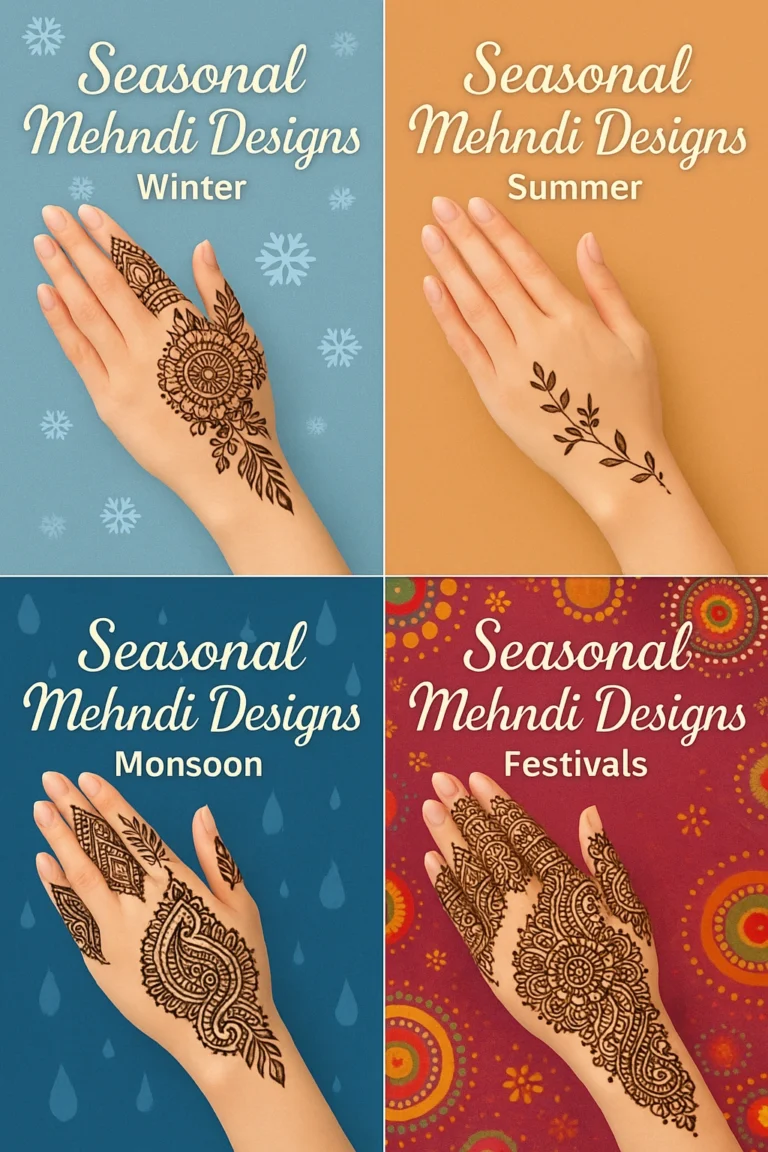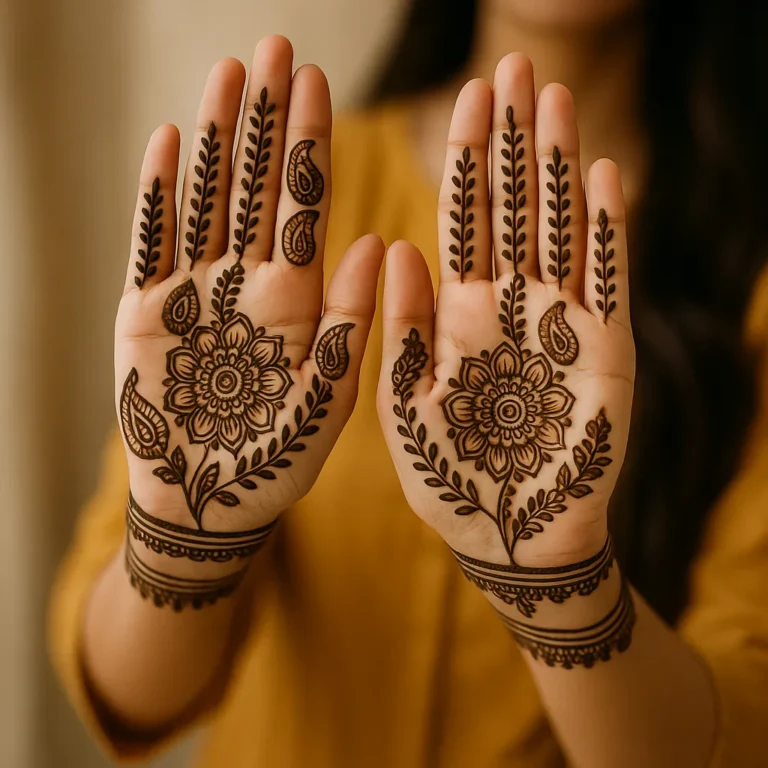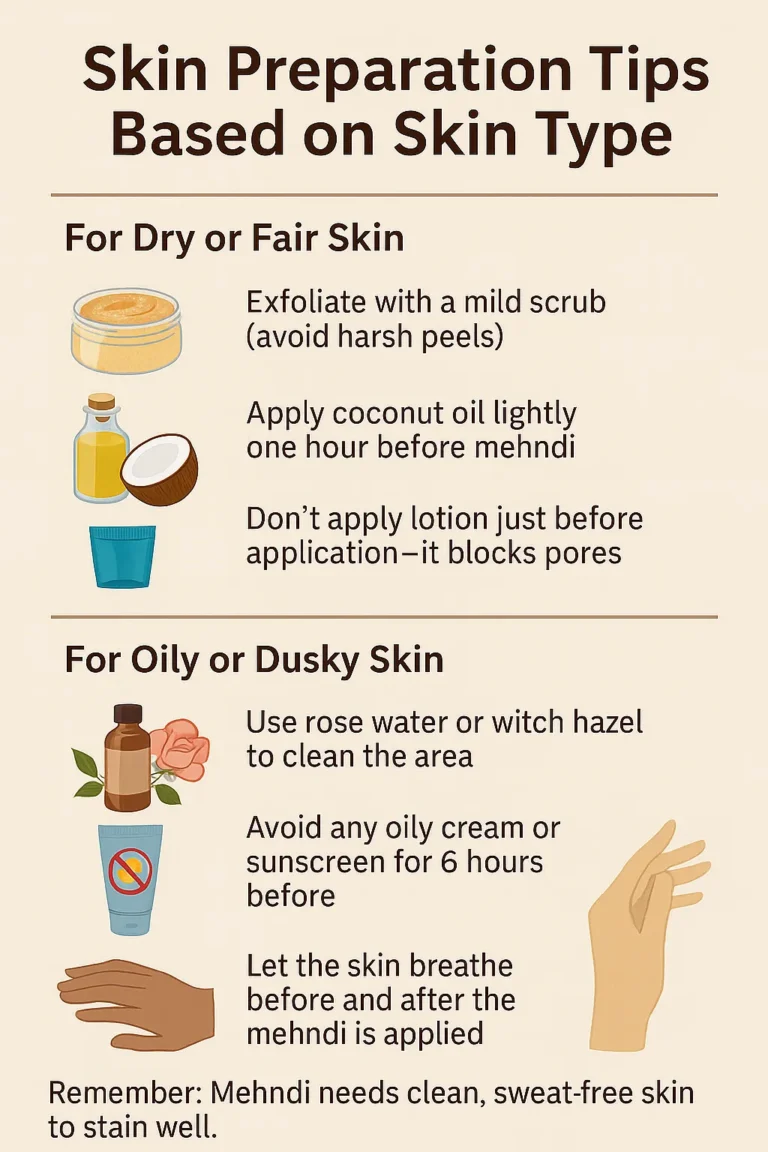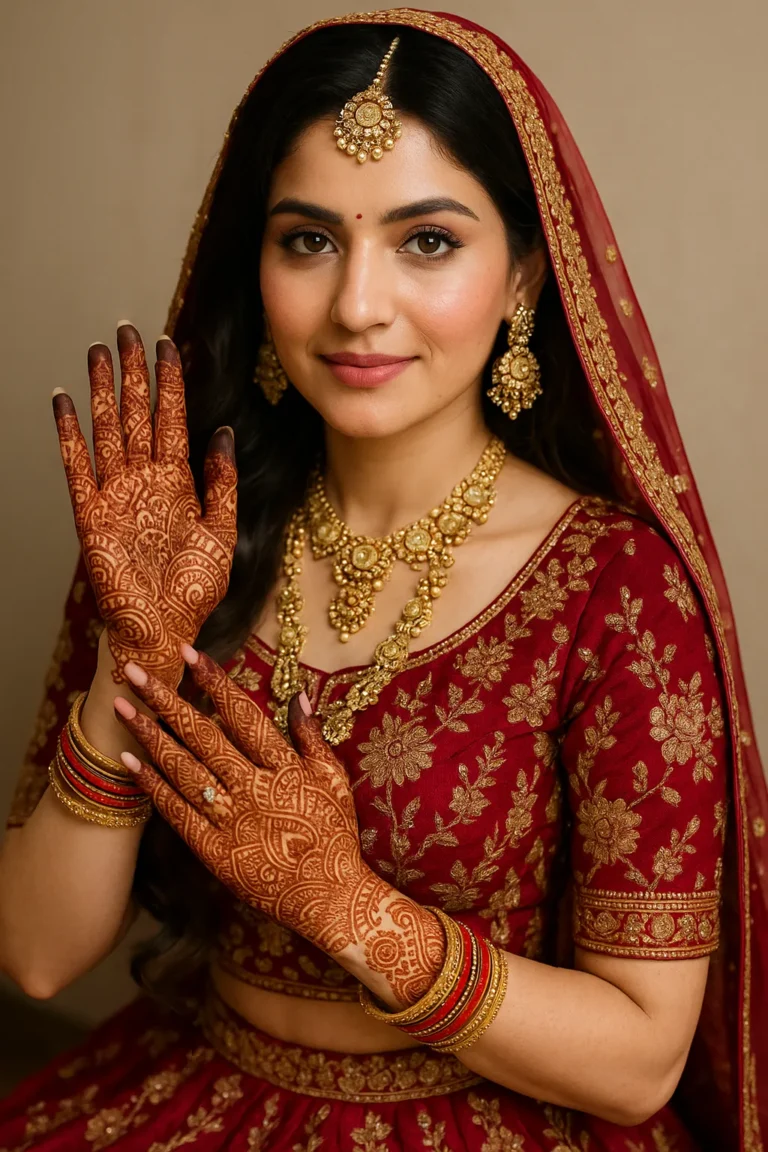The Science Behind Mehndi – Why It Cools the Body and Relieves Stress
For generations, mehndi has adorned the hands and feet of women across India, the Middle East, and North Africa. It’s more than just a tradition — it’s an art form, a ritual, and a cultural statement. But beneath the swirls and motifs lies something deeper: a natural cooling agent, a stress reliever, and a remedy wrapped in beauty.
In today’s world of spa treatments, aromatherapy, and essential oils, mehndi continues to stand out — not just for its aesthetic charm, but for its powerful therapeutic properties. Whether you’re a bride preparing for your big day or someone simply applying mehndi for fun, you might not realize that you’re giving your body a moment of healing.
This article explores the Ayurvedic roots, modern science, and emotional benefits behind mehndi’s calming powers.
🌿 What Is Mehndi, Scientifically Speaking?
Mehndi (also called henna) comes from the leaves of the Lawsonia inermis plant. These leaves are dried, powdered, and mixed with water or lemon juice to create a smooth paste. When applied to the skin, mehndi releases a dye molecule called lawsone, which binds to keratin and stains the skin with a reddish-brown color.
But this process isn’t just about color — it’s also about chemistry and body response.
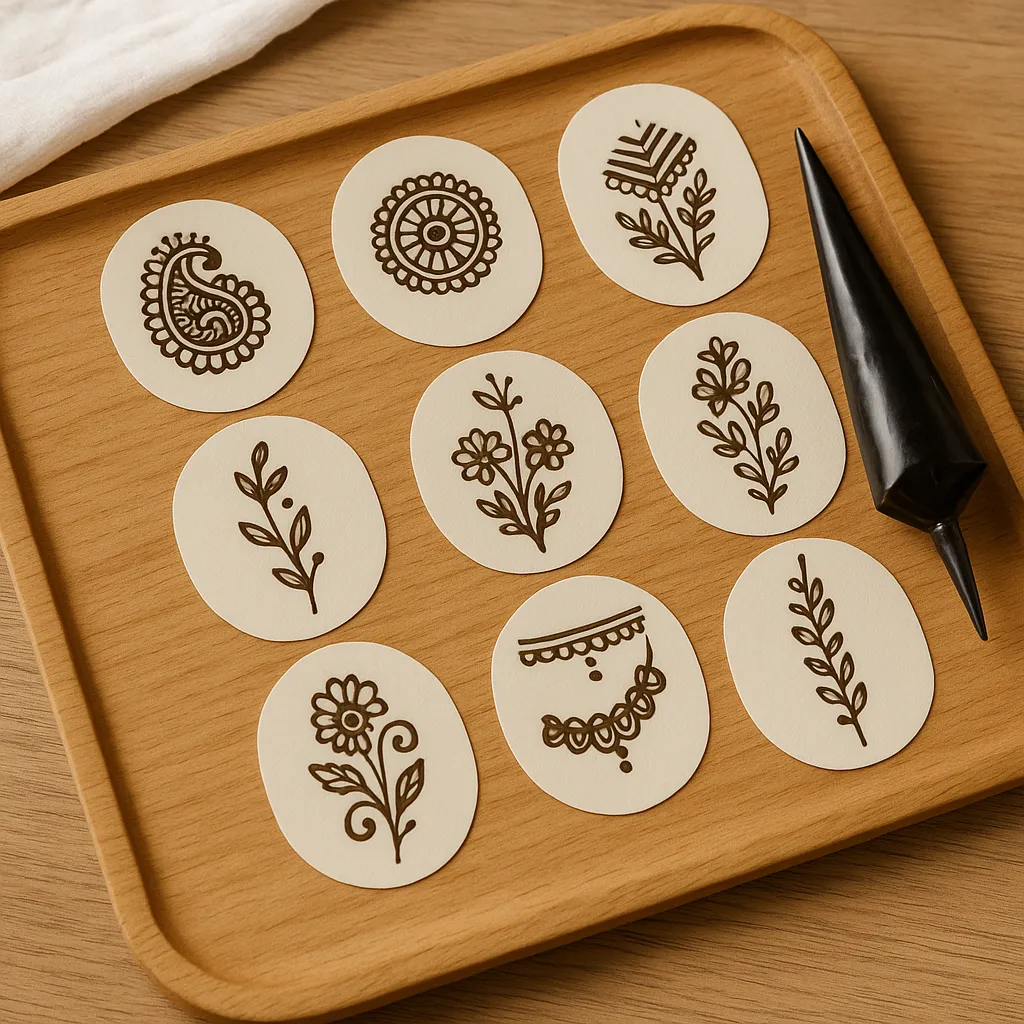
🧠 The Ayurvedic View: Mehndi as a Cooling Herb
In Ayurveda, mehndi is classified as a “sheeta virya” herb — meaning it possesses cooling energy.
✅ Benefits According to Ayurveda:
- Cools down body heat
- Balances Pitta dosha (responsible for fire, heat, emotions)
- Reduces skin inflammation or itchiness
- Calms the nervous system
- Supports better sleep and digestion
In ancient times, applying mehndi was a way to naturally beat the heat — especially during hot summer festivals, long wedding rituals, or emotionally intense ceremonies like Karva Chauth.
🌡️ Modern Science: Why Mehndi Cools the Body
Science backs up what Ayurveda has always known. Mehndi’s cooling effect is real — and here’s how it works:
🧬 1. Evaporative Cooling
When mehndi paste is applied to the skin, it contains moisture. As it dries, it draws heat away from the skin through evaporation, just like sweat does.
💧 2. Molecular Absorption
The lawsone molecule not only binds to skin, but also interacts with sweat glands. It slows down perspiration in that area, which gives a cooling sensation for hours — even after the mehndi is removed.
🛑 3. Anti-inflammatory Properties
Mehndi has natural tannins and flavonoids that help reduce skin irritation, redness, and burning sensations — which is why it’s also applied on minor burns in rural areas.
🧊 4. Vasodilation Effect
Some studies show mehndi helps widen blood vessels in the skin slightly, which increases blood flow and helps dissipate body heat — giving a relaxing effect.
🧘 How Mehndi Helps Relieve Stress
Aside from cooling, mehndi helps calm the mind and body in multiple ways:
🎨 1. Mindful Art Application
The process of applying mehndi itself is therapeutic. It requires focus, stillness, and gentle creativity — similar to painting, knitting, or meditation.
💬 “When I apply mehndi, I forget everything else. It’s just me, the cone, and the pattern.” — A bride-to-be
🌺 2. Aromatherapy-Like Scent
Natural mehndi has a strong earthy smell that many find grounding and calming — similar to how lavender or sandalwood scents affect the brain.
🧎 3. Promotes Rest and Non-Movement
During application, especially in bridal mehndi sessions, you’re required to sit still for hours. This forces rest, slows breathing, and induces calm — much like yoga nidra.
🎁 4. Symbolic Ritual Brings Joy
For many women, mehndi is tied to celebrations, bonding, and femininity. This emotional association reduces anxiety, especially before big events like weddings or festivals.
👣 Real-World Uses of Mehndi as a Cooling Agent
Mehndi is still used as a natural remedy in many parts of the world:
| Use Case | How It Helps |
|---|---|
| Headache relief | Mehndi paste applied to the forehead can cool the temples |
| Heat boils | Applied on affected areas to reduce inflammation |
| Foot fatigue | Mehndi on soles of feet soothes burning sensation |
| Sunburns | Mehndi paste helps cool and heal mild sunburns |
| Pre-wedding stress | Bridal mehndi sessions provide relaxation before the chaos |
💍 Why Brides Apply Mehndi (Beyond Tradition)
Bridal mehndi isn’t just symbolic — it’s therapeutic.
👰 Benefits for Brides:
- Calms pre-wedding nerves
- Helps balance body heat during stressful ceremonies
- Keeps hands and feet cool under heavy jewelry/outfits
- Encourages rest and non-activity
- Creates emotional connection with the moment
In fact, mehndi is one of the few self-care rituals during weddings that truly centers around the bride.
📚 Mehndi in History: Cooling Through the Ages
From ancient Egypt to Mughal India, mehndi has been used as a cooling herb, body paint, and spiritual balm.
In Egypt:
- Used to cool the bodies of the deceased in preparation for burial
- Believed to protect the soul from heat and evil
In Mughal India:
- Royal women applied mehndi as both beauty and relaxation therapy
- Often done before summer court sessions or religious functions
Minimalist Mehndi Designs – Simple, Stylish & Stunning in 2025
🌼 Mehndi in Natural Healing and Wellness Today
In 2025, mehndi is making its way into:
- Natural spas: For cooling masks and hand therapies
- Yoga and wellness retreats: Applied as part of grounding rituals
- Skin-care brands: Some brands include henna-based foot packs and stress relief kits
- Reiki or energy healing: Used symbolically to channel earth energy and root chakra balance
💡 How to Use Mehndi for Cooling at Home
Want to try mehndi as a wellness remedy? Here’s how:
🧊 1. Foot Cooling Pack
- Mix mehndi powder with rose water and a pinch of turmeric
- Apply to soles of feet
- Rest for 20–30 minutes
- Wash and moisturize
Use during hot days or after walking for hours.
💆 2. Scalp Cooling Mask
- Mix henna with curd, lemon, and a few drops of eucalyptus oil
- Apply to scalp (not roots)
- Leave for 45 minutes
- Rinse gently
Great for migraines or summer fatigue.
✋ 3. Hand-Only Mehndi Therapy
- Draw a simple mandala or trail with organic henna
- Focus on applying slowly, like meditation
- Let it dry while breathing deeply
- Remove after 2–3 hours
You’ll feel calmer, cooler, and more grounded.
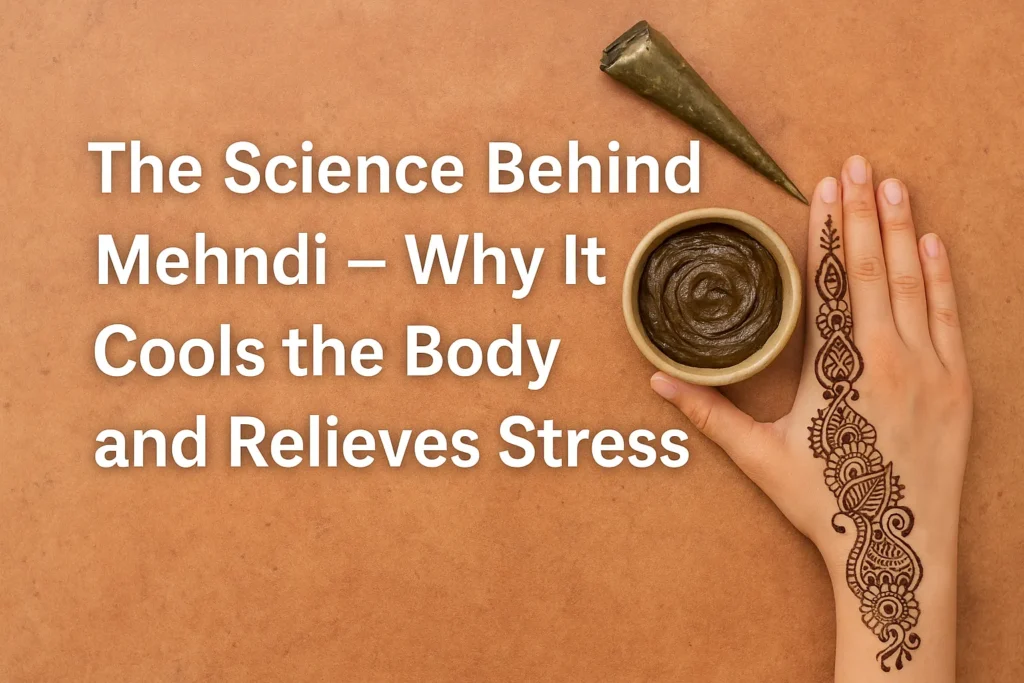
🧴 Aftercare Tips for Maximizing Mehndi’s Benefits
- Don’t wash mehndi with soap — scrape it off naturally
- Apply balm or mustard oil after drying
- Avoid cold water for 6–12 hours post application (to let the stain set)
- Keep hands warm if you want a darker stain (darker = longer-lasting cooling)
🧘♀️ Real Story – How Mehndi Helped Me During Burnout
During a particularly stressful month juggling content work and family obligations, I found myself unable to sleep, overthinking everything, and feeling drained. On a Sunday evening, I sat down and applied a simple back-hand mehndi trail. No mirror, no plan — just flow.
By the time it dried, I had not only created a beautiful pattern but also calmed my breathing. That night, I slept deeply — for the first time in a week. Since then, mehndi has become part of my mental health toolkit.
❓ FAQs – Understanding Mehndi’s Science & Benefits
Q. Does mehndi reduce body temperature?
Yes. It naturally draws heat out of the skin during drying and leaves a lingering coolness for several hours.
Q. Can pregnant women use mehndi for stress relief?
Yes, but only pure, chemical-free henna — never cones with artificial dyes.
Q. Why do some people get headaches from mehndi smell?
That usually happens with artificial cones. Natural mehndi has an earthy scent that most find soothing.
Q. Can I apply mehndi during summer vacations?
Absolutely! It’s the best time. Apply a mandala on feet or hands and enjoy a natural cool-down.
🔚 Final Thoughts – Mehndi Is More Than Art, It’s Healing
In a world full of quick fixes, sometimes the best remedies are those that have stood the test of time. Mehndi is one of them. From its natural cooling properties to its ability to calm a busy mind, it remains a powerful symbol of wellness, beauty, and feminine care.
So the next time you pick up a mehndi cone, don’t just think of it as decoration.
Think of it as healing. As grounding. As a gift to your skin, your nerves, your soul.
Because mehndi is not just drawn — it’s felt.
